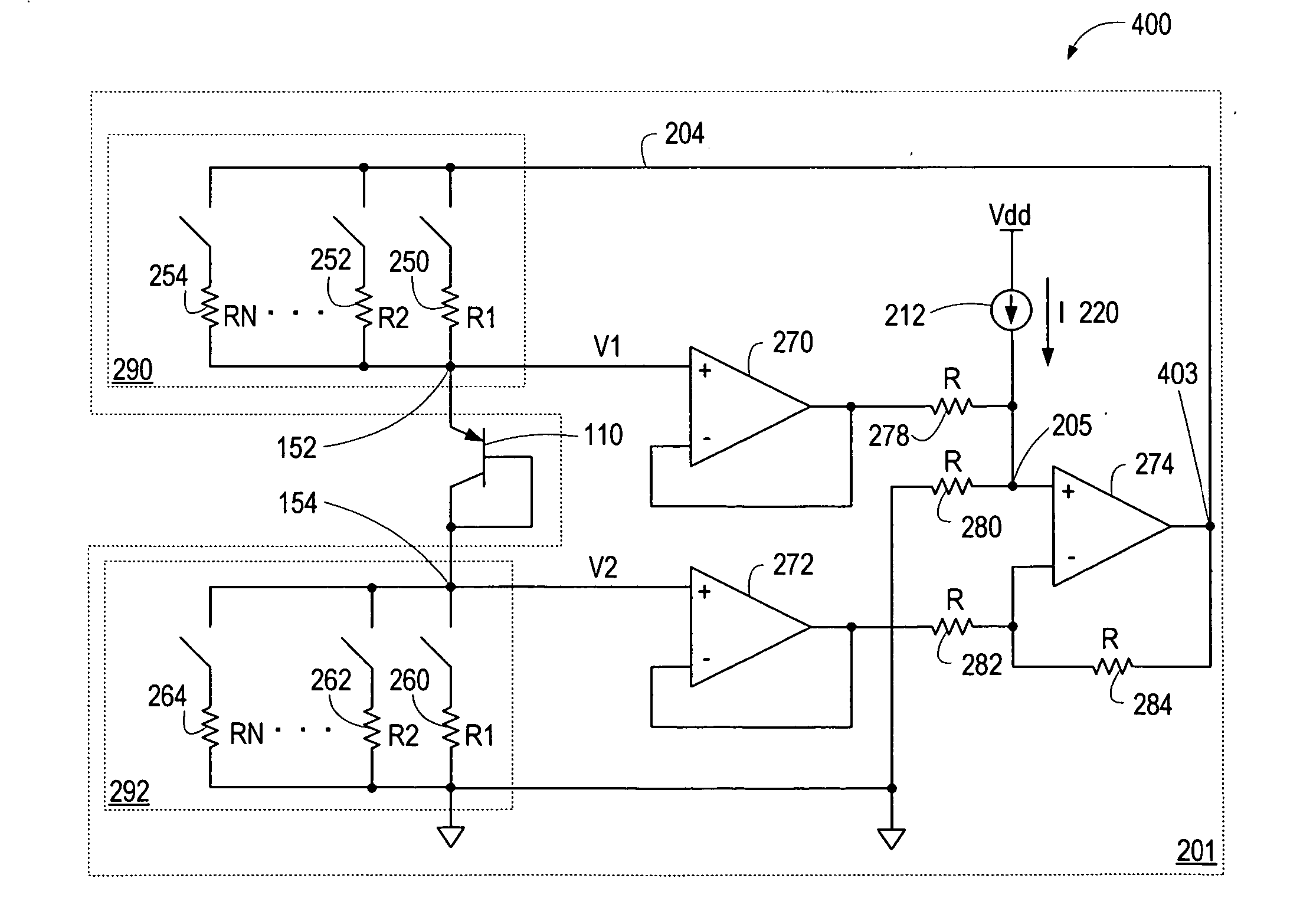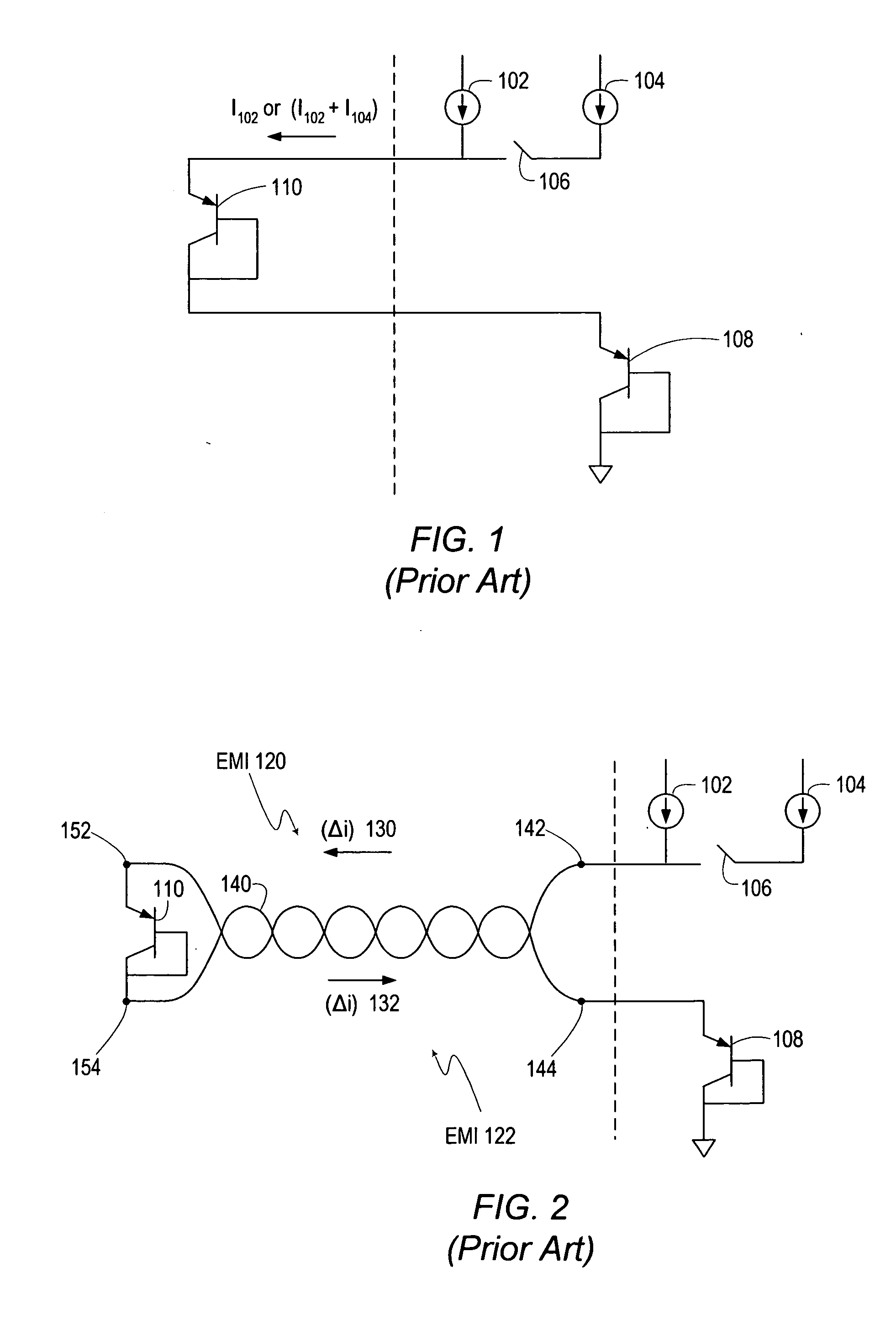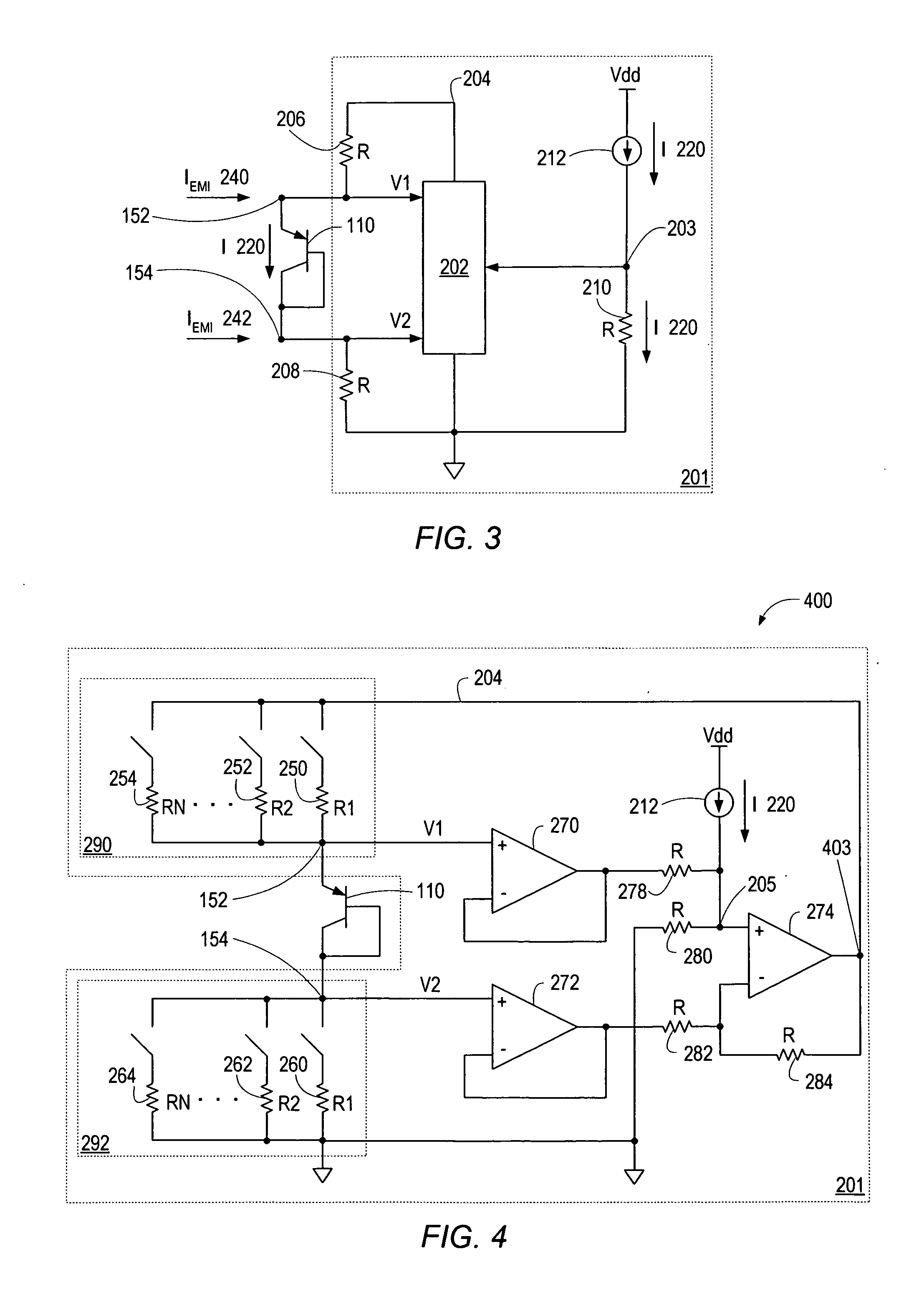EMI rejection for temperature sensing diodes
a technology of temperature sensing diodes and emi, applied in heat measurement, process and machine control, instruments, etc., can solve the problems of increasing the power consumption of measuring devices, prone to operational variance, and many digital systems, especially those that include high-performance, high-speed circuits, to reduce the effect of emi on vb
- Summary
- Abstract
- Description
- Claims
- Application Information
AI Technical Summary
Benefits of technology
Problems solved by technology
Method used
Image
Examples
Embodiment Construction
[0022] As used herein, the word “alternately” is meant to imply passing back and forth from one state, action, or place to another state, action, or place, respectively. For example, “alternately applying a first current source and a second current source” would mean applying the first current source, then applying the second current source, then applying the first current source, then applying the second current source, and so on. Similarly, “alternately setting to a first value and a second value” would mean setting to the first value, then setting to the second value, then setting to the first value, and so on.
[0023] A “diode-junction-voltage” (VBE) refers to a voltage measured across the junction of a diode, or a difference in voltage between a voltage measured at the anode of the diode junction with respect to a common ground and a voltage measured at the cathode of the diode junction with respect to the common ground. A “change in diode-junction-voltage” (ΔVBE) refers to a ch...
PUM
| Property | Measurement | Unit |
|---|---|---|
| constant voltage | aaaaa | aaaaa |
| resistance | aaaaa | aaaaa |
| temperature | aaaaa | aaaaa |
Abstract
Description
Claims
Application Information
 Login to View More
Login to View More - R&D
- Intellectual Property
- Life Sciences
- Materials
- Tech Scout
- Unparalleled Data Quality
- Higher Quality Content
- 60% Fewer Hallucinations
Browse by: Latest US Patents, China's latest patents, Technical Efficacy Thesaurus, Application Domain, Technology Topic, Popular Technical Reports.
© 2025 PatSnap. All rights reserved.Legal|Privacy policy|Modern Slavery Act Transparency Statement|Sitemap|About US| Contact US: help@patsnap.com



